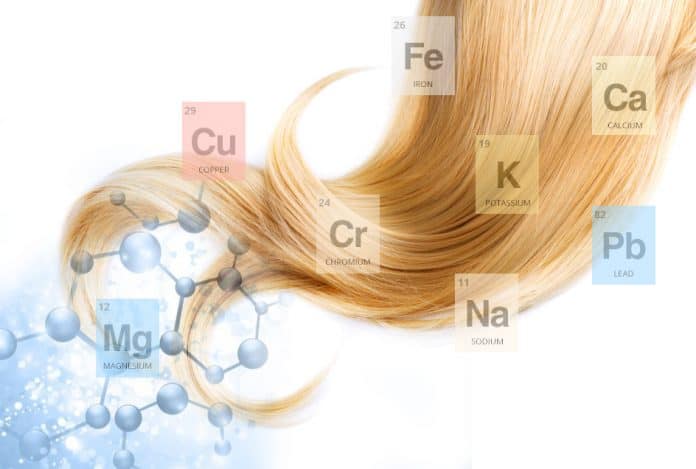Hair Follicle (Hair Mineral) Test | Heavy Metals & Minerals
What Is a Hair Follicle (Hair Mineral) Test?
Who Should Consider Hair Mineral Analysis?
-
Residents near industrial zones, busy roads, or areas with potential water/soil contamination
-
People with occupational exposure (manufacturing, battery/e-waste, mining, salon/chemical work)
-
Individuals with unexplained symptoms: fatigue, headaches, hair loss, dermatitis/eczema, brain fog, tingling, reproductive concerns
-
Parents wishing to evaluate household exposure for children (alongside paediatric guidance)
-
Health enthusiasts tracking mineral balance and supplement response over time
(General rationale drawn from environmental and occupational literature using hair as an exposure matrix.)
- Children with autism
Why Do This Test?
Why Do This Test?
-
Time-averaged exposure picture: Unlike blood and urine that capture current/very recent exposure, hair reflects longer-term trends (weeks to months). Useful for historical exposure checks and monitoring.
-
Easy, non-invasive sample: Only ~0.25 g hair needed; painless and convenient.
-
Environmental health context in Malaysia: Studies in Penang and other Malaysian cohorts used hair to characterise exposure to metals from diet and environment, supporting its value as a screening matrix locally.
Note: Hair testing is best used as part of a broader assessment. Certain public health bodies caution against using hair alone to diagnose toxicity; we pair results with history, symptoms, and where relevant, confirmatory blood/urine tests.
What We Measure (Panels)
What We Measure (Panels)
-
Toxic Metals Panel: As, Hg, Pb, Cd, Ni, Al, Sb, Ba and others
-
Essential Minerals Panel: Ca, Mg, Na, K, Zn, Cu, Se, Cr, Mn, Fe, Mo, etc.
-
Optional extended profiles based on clinical indication (discuss with our team).
Who Is This Test For?
This Hair Follicle (Hair Mineral) Test is suitable for:
-
People with possible environmental or occupational exposure
Living or working near traffic-dense roads, industrial zones, recycling/e-waste sites, workshops, shipyards, or factories (battery, electronics, plating, paint). -
Families with young children (including children on the autism spectrum)
Useful as a non-invasive screen of time-averaged exposure to heavy metals and mineral patterns at home. For children with autism, results can help guide practical exposure-reduction steps and nutrition/mineral optimisation as part of a broader care plan. We’ll interpret results cautiously and may pair with blood/urine tests if indicated. -
Individuals with persistent, unexplained symptoms
Chronic fatigue, headaches, brain fog, tingling/numbness, sleep issues, irritability, low mood, or reduced exercise tolerance. -
Skin, hair, and nail concerns
Eczema/dermatitis, brittle nails, hair thinning or poor hair quality
(Note: significant hair loss may limit sampling; we’ll advise alternatives.) -
Neurological or metabolic red flags
Memory/concentration issues, tremor, peripheral neuropathy, thyroid or glucose dysregulation where mineral balance may matter. -
Fertility and pregnancy planning
Couples trying to conceive or preparing for pregnancy who want a time-averaged view of potential exposures and essential mineral status. -
High seafood or specific dietary patterns
Frequent intake of large predatory fish (e.g., tuna), traditional/herbal remedies, or supplements with unknown purity. -
Well water users and rural households
Private wells or bore water with uncertain testing history. -
Health optimisers and athletes
Tracking zinc, magnesium, selenium and other minerals to fine-tune nutrition and performance over time.
Paediatric notes (quick guide)
-
Only a small amount of hair is needed; we can sample discreetly from multiple tiny spots.
-
If hair is very short or recently treated (bleach/dye/keratin), we’ll discuss timing or alternatives.
-
Interpretation for children—especially children with autism—is done in context with symptoms, diet, and (where relevant) confirmatory tests.
When you might not need this test (or should time it carefully)
-
If you’ve recently bleached, dyed, rebonded, or keratin-treated hair in the last 2–3 weeks (wait or sample new growth).
-
If acute poisoning is suspected now—blood and/or urine testing is more appropriate for urgent assessment (we can arrange both).
Not sure if you or your child fits the profile? Book a quick pre-screen consult and we’ll advise whether hair testing, blood/urine testing—or a combination—best answers your question.




